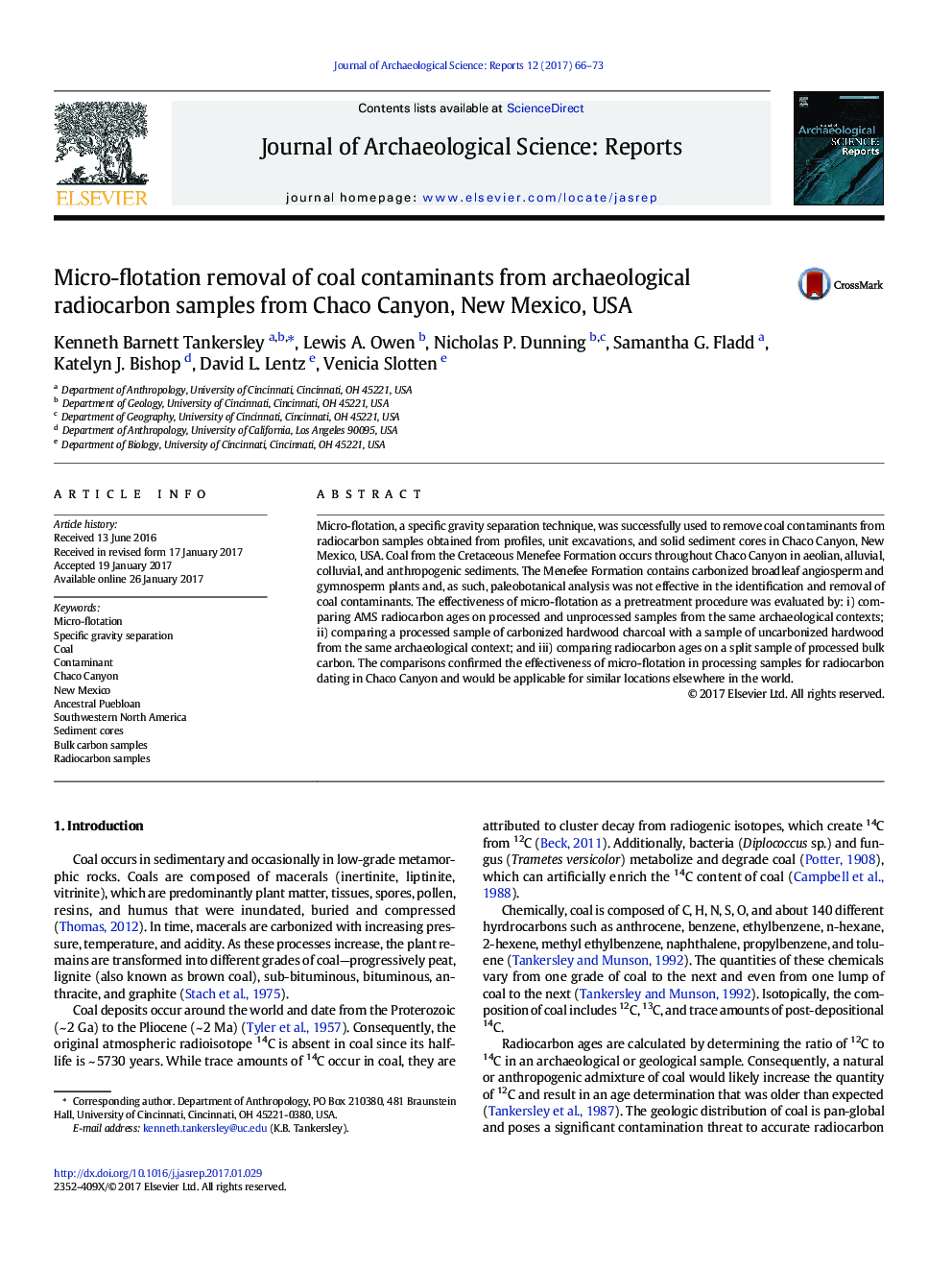| Article ID | Journal | Published Year | Pages | File Type |
|---|---|---|---|---|
| 5112478 | Journal of Archaeological Science: Reports | 2017 | 8 Pages |
Abstract
Micro-flotation, a specific gravity separation technique, was successfully used to remove coal contaminants from radiocarbon samples obtained from profiles, unit excavations, and solid sediment cores in Chaco Canyon, New Mexico, USA. Coal from the Cretaceous Menefee Formation occurs throughout Chaco Canyon in aeolian, alluvial, colluvial, and anthropogenic sediments. The Menefee Formation contains carbonized broadleaf angiosperm and gymnosperm plants and, as such, paleobotanical analysis was not effective in the identification and removal of coal contaminants. The effectiveness of micro-flotation as a pretreatment procedure was evaluated by: i) comparing AMS radiocarbon ages on processed and unprocessed samples from the same archaeological contexts; ii) comparing a processed sample of carbonized hardwood charcoal with a sample of uncarbonized hardwood from the same archaeological context; and iii) comparing radiocarbon ages on a split sample of processed bulk carbon. The comparisons confirmed the effectiveness of micro-flotation in processing samples for radiocarbon dating in Chaco Canyon and would be applicable for similar locations elsewhere in the world.
Related Topics
Social Sciences and Humanities
Arts and Humanities
History
Authors
Kenneth Barnett Tankersley, Lewis A. Owen, Nicholas P. Dunning, Samantha G. Fladd, Katelyn J. Bishop, David L. Lentz, Venicia Slotten,
